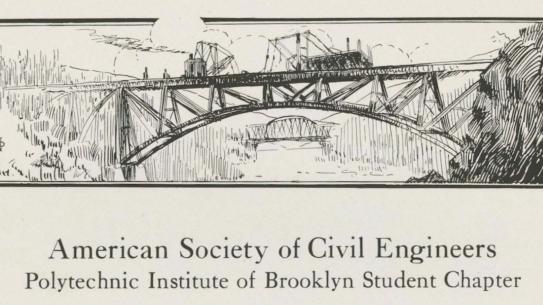Departmental History
Today's Department of Civil and Urban Engineering (CUE) has resulted from the merger of several older entities:
- NYU's Civil Engineering Department
- Polytechnic's Civil Engineering Department
- Polytechnic's Transportation Planning & Engineering Department
The following sections highlight the main milestones in CUE history.
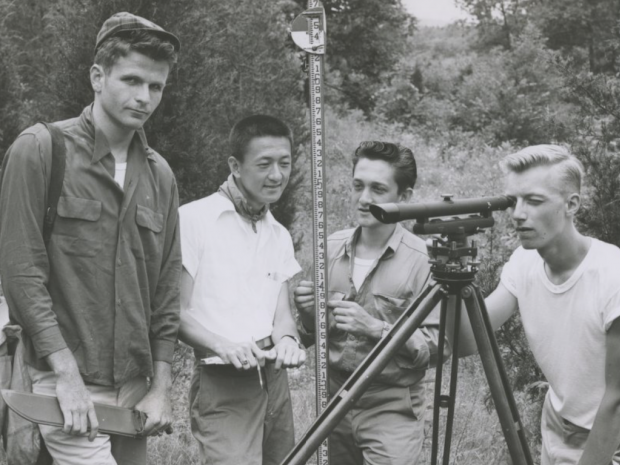
Civil Engineering at NYU Heights Campus
NYU was established in 1831, and former military engineer David Bates Douglass became the first professor to teach courses in civil engineering. In 1854, NYU launched the School of Civil Engineering and Architecture.
In 1894, the School of Engineering moved to the Heights campus in the Bronx and in 1920 changed its name to the College of Engineering. A master’s program in civil engineering was first offered in 1937, and the first doctoral program in civil engineering launched the following year. (Samuel Lubkin had the distinction of being the first to earn a doctoral degree at the Heights campus.)
Charles H. Snow, who joined the faculty in 1891, became one of its longest serving members; in 1897 he became dean of engineering, and during his tenure, which lasted until his retirement in 1930, the student body grew manyfold. He was also a member of New York City Mayor's Commission for National Defense. With Dean Snow at its helm, NYU was one of the first universities to respond to President Woodrow Wilson's call for training engineering personnel for World War I, ultimately producing 1,100 "Fighting Mechanics," as the recruits were known.
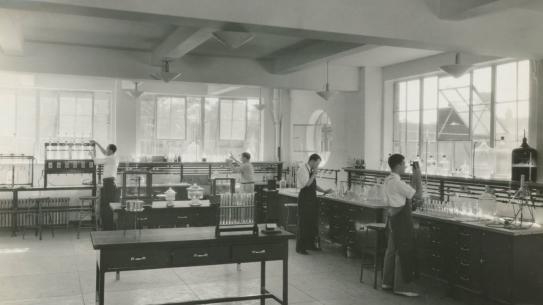
Civil Engineering at Polytechnic Institute/University
Brooklyn Collegiate and Polytechnic Institute was founded in 1854 as a prep school for boys and a college for young men. The first civil engineering professor was George Plympton. In 1871, the first bachelor’s degree in civil engineering was awarded to Frederick Slate, Jr. In 1900, Polytechnic Institute of Brooklyn formed the Civil Engineering Department and in 1901 offered a master’s degree in civil engineering.
In the 1930s, during the years of the Great Depression, the department’s research focused on cement and concrete, flooring materials, bituminous materials, and soils (study vital to the condition of the nation’s highways). During the 1950s, research at the Polytechnic Institute of Brooklyn focused on hydraulics, sanitary engineering, transportation engineering, and surveying. The Institute moved to its current location on Jay Street in 1957, and in the 1960s, it became a pioneer in offering courses in computer techniques in civil engineering. In 1963, the first doctoral course was offered, and in 1968 the first doctoral degree was awarded to James Newell O’Gorman.
In 1962 Polytechnic Institute was commissioned by New York City Mayor Robert Wagner to write the new building code for the city. The work resulted in a 1,400-page, three-volume report that addressed numerous long-overdue issues, including fire protection, effective soundproofing, the novel use of pre-stressed and pre-cast concrete structural members, and new requirements for ramps or street-level entrances for access by people with disabilities.
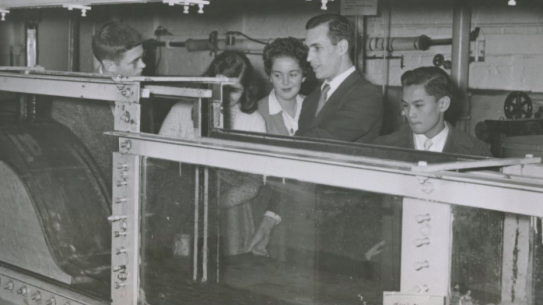
Transportation Planning and Engineering at Polytechnic Institute
The Polytechnic Institute Transportation Engineering Department was established in the early 1960s. In 1965 it introduced a master’s degree program in urban transportation planning, as well as a doctoral program in transportation planning two years later. Professor Louis Pignataro and his students pioneered many of the concepts used in modern traffic engineering, and he published one of the most widely used textbooks on the subject to date. The program trained many of the leaders of the transportation industry in New York City, and some of its alumni founded the leading transportation consulting firms in the Northeast.
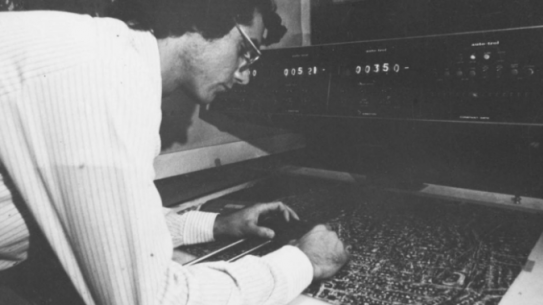
NYU Tandon
The Polytechnic Institute of New York (PINY) was formed in 1973 by the merger of Polytechnic Institute of Brooklyn (PIB) and New York University's School of Engineering and Science (NYU-SEAS). During the period stretching from 1973 to 1985 top sponsored research included environmental engineering and wastewater systems, bridge construction, geotechnical engineering, and transportation engineering. In 1985 the school changed its name to Polytechnic University.
In 2008 Polytechnic University forged an affiliation with NYU and changed its name to Polytechnic Institute of NYU. The two organizations fully merged in January 2014. In October 2015, in recognition of Chandrika and Ranjan Tandon’s $100 million gift, the official name of the school was changed to the New York University Tandon School of Engineering.

Pioneering Women
Women undeniably played an important role in the formation of Tandon. In a bequest, Harriet Putnam Packer donated the seed money that paved the way for establishing the Brooklyn Collegiate and Polytechnic Institute.
Today, approximately 40% of the CUE class is comprised of women. However, the legacy of female students dates back to 1929, when Jessie T. Ferguson enrolled in the College of Engineering at NYU's Heights campus, where she studied as an evening student; in 1935 she became the first woman to be awarded a bachelor's degree in civil engineering.
In 2018 Dean Jelena Kovačević became the first woman to head the school since its founding.
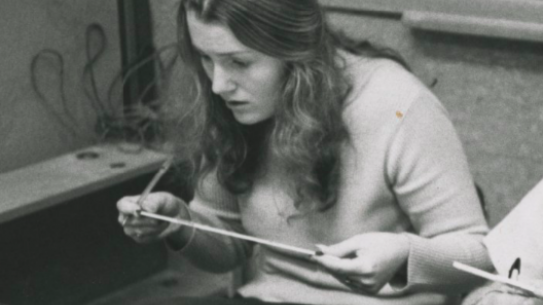
Student Activities
Tandon student clubs have a storied history. The oldest continuously running student club in the history of the Brooklyn campus is the student chapter of the American Society of Civil Engineers (ASCE), which was founded during the 1920-21 academic year. Similarly, the student chapter of Chi Epsilon Civil Engineering Honor Society was founded in 1949, and is in continuous operation to date.
Highlights of each year always include ASCE Concrete Canoe Competition, which provides students with a hands-on learning experience in creating, building, and racing a boat constructed from a material most laypeople assume will never float, and the Steel Bridge Competition, sponsored by ASCE and the American Institute of Steel Construction, which requires students to conceive, design, fabricate, erect, and test a steel structure that meets client specifications and optimizes performance and economy. Over the years, Tandon teams have often dominated in competition.
